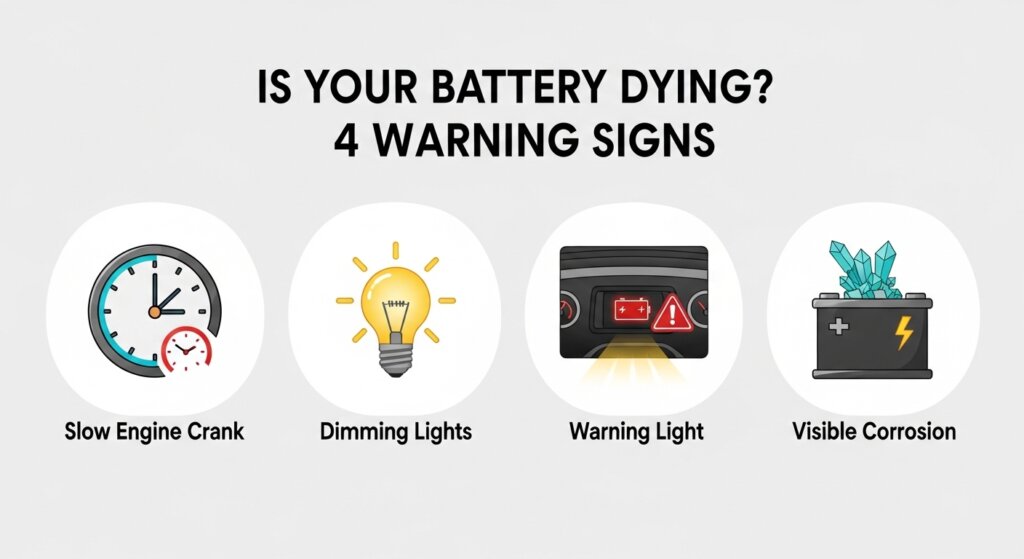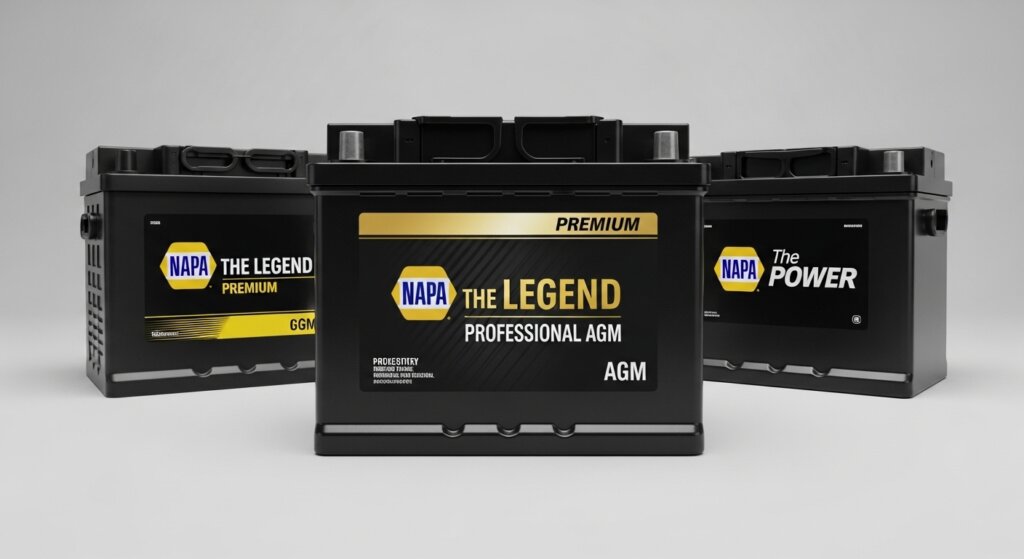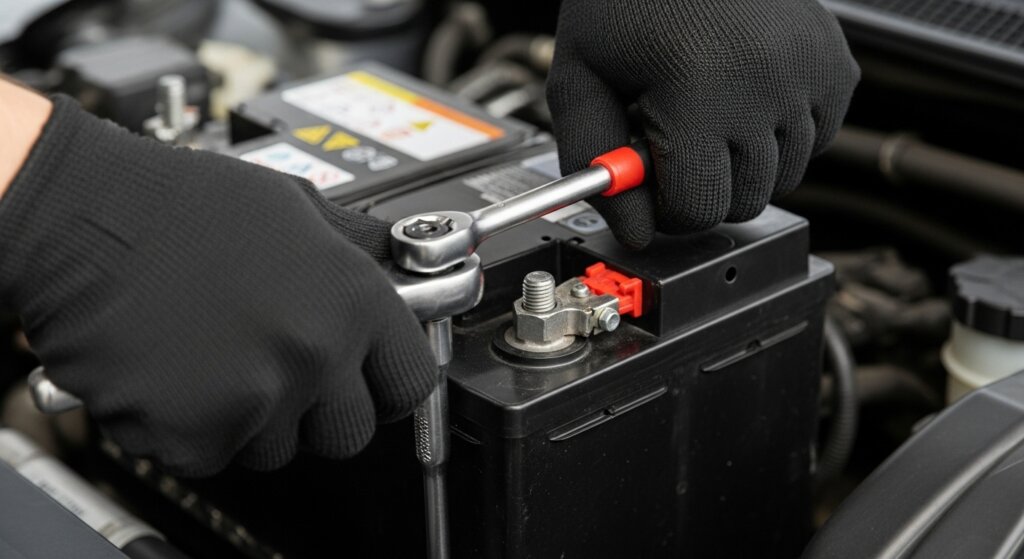There are few automotive frustrations more universal than the dead car battery. That dreaded silence when you turn the key is a problem that can derail your entire day. A car’s battery is the heart of its electrical system, and choosing the best car battery is a critical decision for ensuring your vehicle’s reliability, especially in extreme weather. A high-quality battery isn’t just a purchase; it’s an investment in peace of mind.
This comprehensive guide is designed to be your ultimate resource. We will answer the most common questions, including “how long do car batteries last” and “how much is a new car battery,” break down the key features to look for, and provide an in-depth review of a top-tier brand, NAPA, to help you find the best car battery for your needs.
Table of Contents
- I. How Long Do Car Batteries Last? (And the Telltale Signs Yours is Dying)
- II. The Buyer’s Guide: What to Look for in the Best Car Battery
- III. How Much is a New Car Battery? (Understanding the Cost)
- IV. In-Depth Review: Why NAPA Batteries are a Top Choice
- V. Conclusion: The Smart Choice for Reliable Power
- VI. Frequently Asked Questions (FAQs)
I. How Long Do Car Batteries Last? (And the Telltale Signs Yours is Dying)
The first question every driver asks is, how long do car batteries last? On average, a standard car battery will last between 3 to 5 years. However, this lifespan can be affected by factors like your climate (extreme heat is a major killer of batteries), your driving habits (frequent short trips can be detrimental), and the electronic demands of your vehicle.

Be on the lookout for these warning signs that your battery is nearing the end of its life:
- Slow Engine Crank: The engine turns over more slowly than usual when you start the car.
- Dimming Lights: Your headlights and interior lights seem dimmer, especially at startup.
- Warning Light: The battery or check engine light appears on your dashboard.
- Corrosion: A white, ashy substance is forming on the metal battery terminals.
- Old Age: If your battery is over three years old, it’s a good idea to have it tested annually.
II. The Buyer’s Guide: What to Look for in the Best Car Battery
When you’re ready to buy, here are the key technical specifications to understand.
- Battery Type (AGM vs. Flooded):
- Flooded Lead-Acid: The traditional, more affordable type of car battery.
- AGM (Absorbent Glass Mat): A more advanced, sealed battery that offers better performance in extreme temperatures, is more resistant to vibration, and is ideal for modern vehicles with lots of electronics (like start-stop technology).

- Cranking Amps (CCA): Cold Cranking Amps (CCA) is the most important rating. It measures the battery’s ability to start your engine in cold weather (0°F / -18°C). Always choose a battery that meets or exceeds your vehicle manufacturer’s CCA recommendation.
- Group Size: This is simply the physical size and terminal placement of the battery. It must match your vehicle’s specifications perfectly. You can find this in your owner’s manual or an online battery finder tool.
- Warranty: A longer warranty is a strong indicator of a higher-quality battery. The best car battery brands often offer excellent warranty and replacement policies.
III. How Much is a New Car Battery? (Understanding the Cost)
So, how much is a new car battery? The price can vary significantly based on the type, size, and brand.
- Budget Flooded Batteries: Typically range from $100 to $150.
- Premium Flooded Batteries: Can cost between $150 and $200.
- AGM Batteries: These are the most expensive, usually ranging from $200 to $350+, but their longer lifespan and superior performance often justify the cost for modern vehicles.

IV. In-Depth Review: Why NAPA Batteries are a Top Choice
When you’re looking for the best car battery, NAPA is a brand synonymous with quality and reliability in the automotive world. They offer a range of batteries to fit every need and budget, all backed by a strong nationwide warranty.
1. NAPA The Legend Professional (AGM)
Best For: Modern Vehicles, Extreme Climates, and High-Performance Demands. This is NAPA’s top-of-the-line AGM battery. It’s engineered for maximum starting power and is the perfect choice for vehicles with start-stop technology and numerous electronic accessories.
- Key Features: AGM technology, high CCA ratings for excellent cold-weather performance, 36-month free replacement warranty.
- Pros & Cons: Pro: Superior durability and lifespan. Pro: Excellent performance in both extreme heat and cold. Con: Higher initial cost.
- Real User Experience: I installed this in my SUV that has a ton of electronics and a start-stop system. The difference in starting confidence, especially on freezing winter mornings, was immediately noticeable.
- Comparison: Compared to a standard flooded battery, the Legend Professional AGM offers significantly better reliability and a longer service life, making it a smarter long-term investment.
2. NAPA The Legend Premium (Flooded)
Best For: The Everyday Driver Seeking Excellent, Reliable Performance. This is NAPA’s most popular flooded lead-acid battery. It’s the workhorse of the lineup, offering a fantastic combination of reliability, power, and value for a wide range of cars, trucks, and SUVs.
- Key Features: High CCA ratings, designed for long life in all seasons, 24-month free replacement warranty.
- Pros & Cons: Pro: Excellent performance and reliability for the price. Pro: Widely available for most vehicle models. Con: Not as long-lasting as an AGM battery in extreme conditions.
- Real User Experience: This is the go-to battery for our family’s daily driver. It provides consistent, reliable starts year after year and has never let us down. It’s a trusted, no-nonsense choice.
- Comparison: For vehicles without the high electronic demands of start-stop systems, The Legend Premium offers the best car battery performance in the traditional flooded category.
3. NAPA The Power
Best For: The Budget-Conscious Driver or Older Vehicles. The Power line is NAPA’s entry-level option, designed to provide reliable starting power at a very accessible price point. It’s an excellent choice for older vehicles or for drivers looking for a dependable battery without the premium features.
- Key Features: Meets or exceeds OEM specifications, 18-month free replacement warranty.
- Pros & Cons: Pro: Very budget-friendly. Pro: Backed by NAPA’s quality standards and warranty. Con: Lower CCA ratings and a shorter lifespan than the Legend series.
- Real User Experience: I needed a reliable but affordable battery for my older commuter car. The NAPA Power fit the bill perfectly. It provides strong, consistent starts and gave me peace of mind without breaking the bank.
- Comparison: While it doesn’t have the longevity of a premium AGM battery, it’s a far superior and more trustworthy option than a generic, no-name battery from a discount store.
V. Conclusion: The Smart Choice for Reliable Power
A car battery is not a component you want to gamble on. Being stranded can be costly, inconvenient, and even dangerous. Investing in the best car battery you can afford is a critical part of vehicle maintenance. By understanding your car’s needs and choosing a trusted, high-quality option from a brand like NAPA, you are ensuring that your vehicle will be ready to start reliably, every time you turn the key.
Free Shipping on Orders Over $35VI. Frequently Asked Questions (FAQs)

- Q: How to replace a car battery?
- A: The basic steps are: disconnect the negative terminal first, then the positive. Remove the hold-down clamp, and lift the old battery out. Clean the terminals, insert the new battery, secure the clamp, and then connect the positive terminal first, followed by the negative. Always consult your owner’s manual and wear safety glasses.
- Q: How to charge a car battery?
- A: You’ll need a dedicated car battery charger. Connect the charger’s red clamp to the positive terminal and the black clamp to the negative. Plug in the charger and select the appropriate charging mode (e.g., 12V).
- Q: How many volts is a car battery?
- A: A fully charged car battery should read around 12.6 volts or slightly higher when the engine is off. When the engine is running, the voltage should be between 13.7 and 14.7 volts.
Continue Your Adventure: More Expert Guides
If you found this guide helpful, explore our other expert reviews and how-to articles to get the most out of your vehicle and your next trip.
Gear Reviews & Buying Guides
- Camp kitchen: The 10 essential items for your 2025 trips
- Learn how to build the ultimate outdoor kitchen with our guide to the 10 essential, best-selling items for amazing campsite meals.
- Best portable car battery jump starter: 5 top 2025 picks
- Never get stranded by a dead battery again. We review the top 5 models for ultimate peace of mind on the road.
- The Best Portable Power Station for Camping: A Complete Guide
- From running lights to powering a fridge, discover the best off-grid power solutions for your campsite.
Car Care & Protection
The 12 Essential Tools for the Ultimate Car Cleaning Kit (2025)
Achieve professional results at home. We review the 12 must-have, best-selling products for a showroom-perfect finish.
How to Choose the Best All-Weather Car Cover: A Complete Guide
Protect your vehicle’s paint and finish from sun, snow, and rain with our in-depth guide to choosing the perfect waterproof cover.
How to Protect Your Car’s Paint from Sun, Snow, and Scratches


